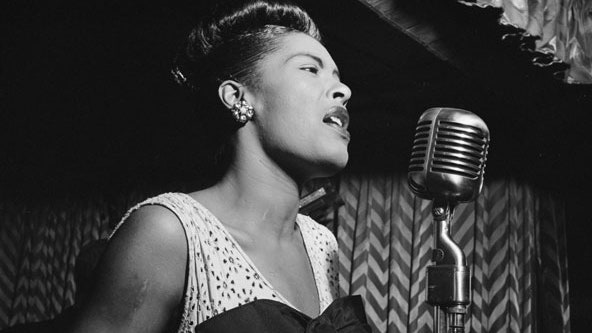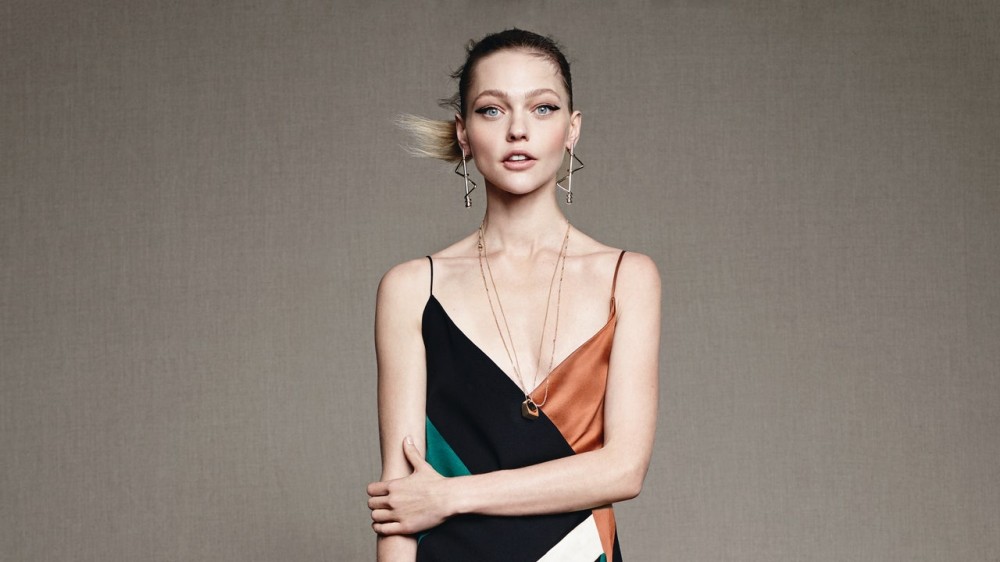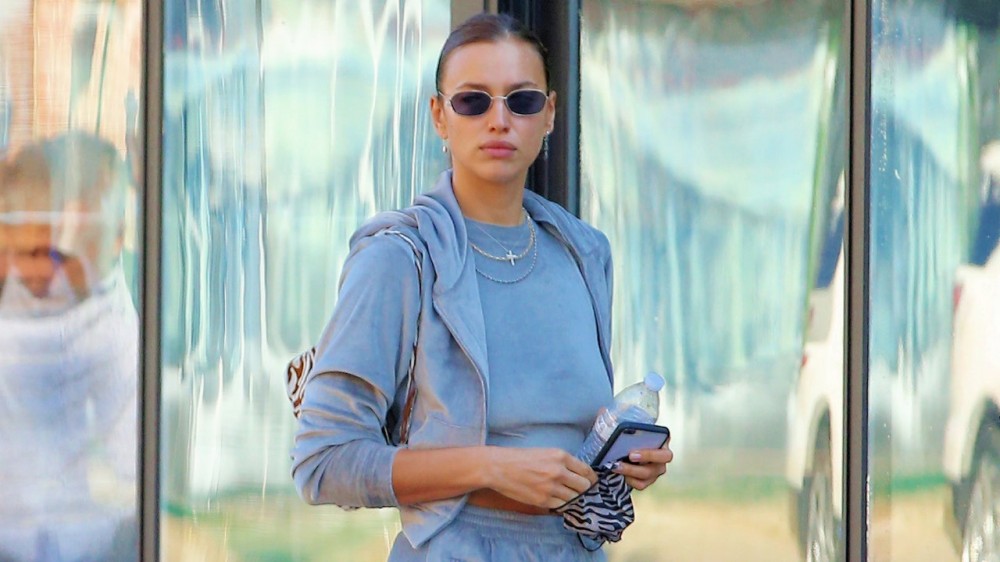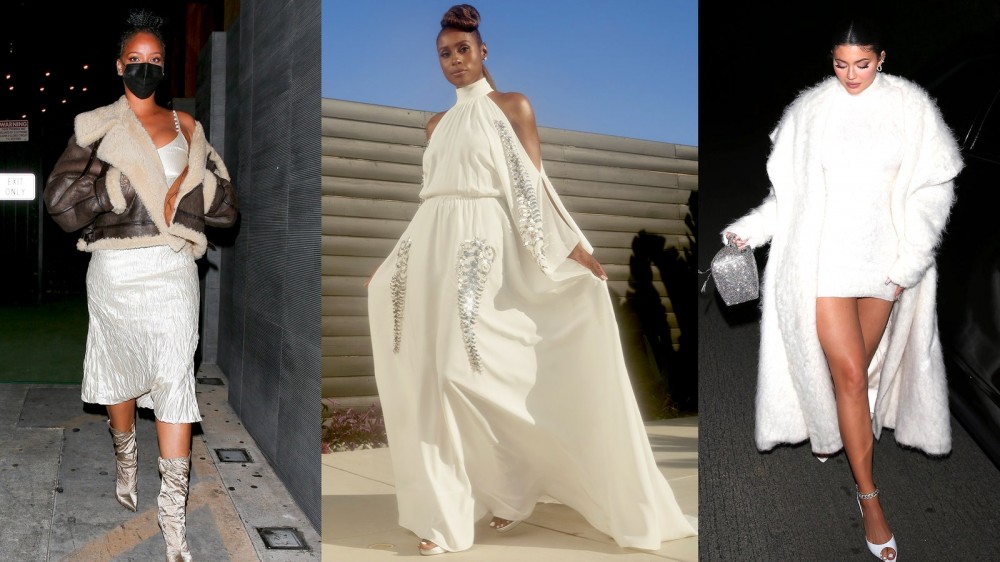
Style With Soul: How the World’s Most Iconic Black Women Singers Expressed Themselves Through Fashion
As a child, one book in our Afrocentric family library cast a particular magnetism upon me. It was A Zora Neale Hurston Reader, edited by Alice Walker; the 1979 Feminist Press edition with the wraparound cover. On the front stood Hurston, rocking a severe dark coat, a pink beret upon which a floating feather was mysteriously pinned, and a broad smile underneath the first half of the title, I Love Myself When I Am Laughing.
Flip the book over, and there was Hurston working the same look, but without a trace of a smile, just an arched brow and some serious side-eye under the second half of the title, And Then Again When I Am Looking Mean and Impressive. I gagged. Even before I grew up and read her essays, novels and ethnographies devoted to her unparalleled study of expressive Blackness, I had a sense of where Hurston was coming from. She was stuntin’ in those portraits, giving to the camera, but holding something back for herself. Self-love as a radical act is a common thing to claim today. But to understand how radical it has been for Black women over the decades to perform self-care through dress requires that we attend to the bone-deep collective wisdom conveyed in Hurston’s impish declaration.
A recent wave of films featuring the stories of iconic Black women singers of the 20th century offer an excellent opportunity to witness how clothing helped them respond to the depth of anti-Blackness and misogynoir they faced, highlighting the ways in which these women did not simply accept these conditions, but wore their defiance as sartorial armor.
Jennifer Hudson stars in the forthcoming Aretha Franklin biopic Respect.
Lifestyle Pictures / AlamyIn films such as Ma Rainey’s Black Bottom, The United States Vs. Billie Holiday, and the much-awaited Aretha Franklin biopic Respect, clothes are crucial to telling the story of what critic and professor of African American studies Daphne Brooks calls “angular black womanhood,” a phrase that picks up Hurston’s famous characteristics of Black style, which drive towards the angular, the asymmetric, and the highly adorned. The way divas pieced together a look, whether on stage, in public, or in the private scenes these recent films reimagine, was crucial to creating the conditions for this angular beauty to emerge.
Portraying Black styles on screen
Of course, none of these women dressed like the other, or even used fashion towards the same consistent purpose. When Franklin adopted the afro (which happened “overnight” Respect costume designer Clint Ramos tells Vogue) she telegraphed a political message to the world, well before she publicly supported social activist Angela Davis by offering to post her bail in 1970. (Davis had been charged with aiding the botched escape attempt of imprisoned Black activist George Jackson — she was later acquitted.)
Aretha Franklin photographed in 1971.
Anthony Barboza / Getty ImagesRamos relates how he approached Franklin’s style as a means to “telegraph her humanity”, not so much through aspirational respectability, but in what she wore in such an inimitable way. An “independent dresser”, Franklin followed her own sensibility rather than that of designers, making a virtue out of the plain reality of a color-conscious fashion industry not ready to paint Black women into their picture of glamour. Even when her fashion was “askew”, Ramos notes, “you see the liberation of a human being” through her ability to perform this independence.
Billie Holiday performs at the Newport Jazz festival, Newport, Rhode Island, 6 July 1957.
Bill Spilka / Getty ImagesJust standing up for yourself and your people could take guts, and extract a psychic toll. Holiday’s style communicated a glamour and vulnerability that made her anti-lynching protest song Strange Fruit all the more unexpected and subversive (some listeners missed the point entirely, although the FBI understood perfectly and went after her). The subject of another rumored biopic, Eartha Kitt adds to this refrain when we learn how her sex-kitten persona didn’t stop her from attending a White House dinner in 1968 and confronting the Johnson administration about the Vietnam war, resulting in backlash and blacklisting. And Rainey, as envisioned by playwright August Wilson in Ma Rainey’s Black Bottom, turned retaining dignity under racist insult into a virtual theatre, even as the film makes clear that the soul of her music did not originate in the circumstances of her oppression, but lay somewhere beyond.
Eartha Kitt photographed in London, December 1955.
Hulton Deutsch / Getty ImagesRainey, although lesser known now than 1920s singer Bessie Smith, claimed the title ‘Mother of the Blues’ in her day. As portrayed in the film by Viola Davis and dressed by Ann Roth, Rainey is a diva who understands that her career may be fading at the time the film is set — Chicago in 1927 — but who also knows that how she carries herself will be the example for others Black artists in an industry that is always chasing the next Black sound to dispose of the current one. Her extravagant prevarications raise refusal to an art form.
Yet, however much Rainey withholds in the studio, dressed in her faded glory, she returns it many times over in one of the film’s remarkable scenes set at a tent show in the US south. When she is “articulating defiance” for her people, as director George C Wolfe puts it in Ma Rainey's Black Bottom: A Legacy Brought to Screen, Rainey can be as real and bawdy as she wants, and the joy of sweating, styling and profiling movement powers her. Roth conveys this in the embroidered purple chiffon dress Davis wears as she winds and grinds, waving her feather fan, and singing for such a long time under the lights of the tent that her makeup looks like, as Davis recalls in the documentary, “grease paint”.
Viola Davis stars in Ma Rainey’s Black Bottom (2020)
David Lee / NetflixLee Daniels’ The United States Vs. Billie Holiday puts angular Black womanhood front and centre with its chilling tale of state persecution of a singer who took a courageous stand against white supremacist terror. Her looks were also creatively sourced, costume designer Paolo Nieddu tells me, given the reality facing a Black performer on the road in the Jim Crow era.
Andra Day stars in The United States vs. Billie Holiday (2021)
Takashi Seida / HuluNieddu sought to dress actor Andra Day in ways that conveyed Holiday’s glamour even as the persecution she faced for her heroin addiction took its toll. Even a “princess moment” such as Day’s unforgettable rendition of Lover Man is conveyed through a look that has to be “masked up” backstage, Nieddu says. Sometimes allure is just a false front, but sometimes it’s what the dispossessed can give to themselves when society thinks they deserve nothing. As performance critic Madison Moore told me, “sometimes the best looks are improvised.”
How ‘angular Black womanhood’ continues to inspire
Style is a renewable resource for Black women, as Kitt acknowledges in an aphorism: “The only thing I can sell and still own is my talent.” In her daughter Kitt Shapiro’s memoir, Eartha & Kitt (Pegasus, May 2021), we get a picture of someone who drew a sharp distinction between her public appeal and her private life, especially as a mother. This need for a periodic retreat from the glare of publicity was felt with particular force by Black women who could not take for granted the deference accorded white women. Fashion tells this story as well, particularly in movies that seek to reconstruct the vulnerable private moments of our iconic figures.
Eartha Kitt with her daughter Kitt Shapiro, February 1965.
Bettmann / Getty ImagesIn the profusion of stories making it to the screen — and in new books including Daphne Brooks’ Liner Notes for the Revolution (Harvard University Press, 2021) and Maureen Mahon’s Black Diamond Queens (Duke University Press, 2020) — we can now encounter many of these Black women artists in all their collectively vibrant and subversive glory. Now they are no longer always ”thrown against a white background,” as Hurston once quipped, but can be seen and heard in the affirming Black circle, for whom they continue to serve as role models for making a way out of no way.
Tavia Nyong’o writes, teaches and curates Black performance, and is the author, most recently, of Afro-Fabulations: The Queer Drama of Black Life (New York University Press, 2018). He is working on a suite of essays about the dark art of refusal in recent art and criticism



